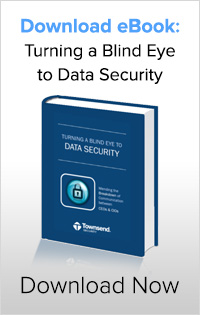I recently watched a movie that really made me think about how the cryptographic landscape has evolved. Eighty years ago encryption was almost entirely the domain of military organizations. Now it is ingrained in nearly every business transaction that takes place every day. The average person hardly takes notice. Will strong encryption, secure key management, and complex passphrases be enough to stop attacks of future?
We can scarcely avoid them these days. The “smart phone” seems to have been the catalyst that blew our (at the very least my) cozy concept of privacy right out of the water. Most people trust that their data is secured by whatever cell service they use or by the social media site they frequent. Few people take responsibility for their own sensitive data management. Perhaps they do not feel there is a need, or perhaps they do not consider it sensitive.
I feel that this is not the right attitude. Consider, for instance, the webcam and mic. Fifteen years ago I needed to go to an electronics store to purchase a golf ball sized orb on a clip to use video chat, or spend upwards of $300 if I wanted to film my friends and I skiing. Those devices needed to be plugged in or turned on to work.
Now, just in my house alone, I have at least six HD cameras in the form of old smart-phones, laptops, and gaming devices. Most of those devices are always on by design, and vulnerable to breach. Suppose there was sensitive information within view of one of those cameras, even if it’s just a calendar. It’s worth thinking about, especially considering that today just about every device comes with an integrated camera. Video game systems can listen to our conversations and respond to verbal queues (and in some cases movement). Software can now turn speech into text accurately and reliably. Taking this into account, sensitive data now goes far beyond a credit card or social security number. Everything you say or do in your own home is now, quite possibly, sensitive data.
Rising to Meet Future Threats
Very soon the smartphone will be among the least of our worries. Things like computerized smart glasses, smart watches, and other smart appliances will start to invade our workplaces and homes. This raises a very real security concern when you think about it. All it would take is one compromised smartwatch to capture a password from a whiteboard. In fact it may not even be as sneaky as all that. I recently read a funny article that detailed three or four data security slips. In each of the instances there was a photo of an anchor with sensitive data such as a password in the shot behind them. These were photos deliberately taken without regard for what was captured in the shot. Responsibility for the photos falls on the photographer in that case.
That article did make me think though. Would crafty attackers be inclined to hack the cameras of personal devices? A smartphone that’s in your pocket most of the time might pose little threat, but what about a smart watch? Could a particularly determined attacker gain access to Database Administrators home appliances? What if they were able to learn of a passphrase or record business conversations by hacking an entertainment system? It would be worth the attempt if it meant the keys to the kingdom.
Surely you’ve implemented, or at the very least heard of the following security steps. These are the basics, the steps you take to prevent a conventional attack
- Deploy strong encryption wherever possible, and adopt a strong key management solution.
- Do not keep passwords written down, especially on whiteboards.
- Use strong passwords like phrases that include dashes, or numbers are great.
- Develop and enforce policies regarding security best practices on employee’s personal and home devices.
Finally, lets make the safe assumption that attackers are thinking outside of the box. It follows that we too must think creatively to stop data breaches. Now lets pretend that an attacker has hacked a smartwatch or webcam and acquired a password to your database. That attacker has just bypassed most of the security measures you’ve put in place. The only thing that will stop an attack at this stage is a strong two-factor authentication solution. If deployed on the breached system the attacker tries to enter the stolen passphrase. Instead of gaining access the screen displays an Alert. “A text message has been sent to your phone, please enter the 6 digit pin to continue”. Two Factor Authentication saves the day. As more and more digital devices flood the workplace the need for another line of defense become very real.


